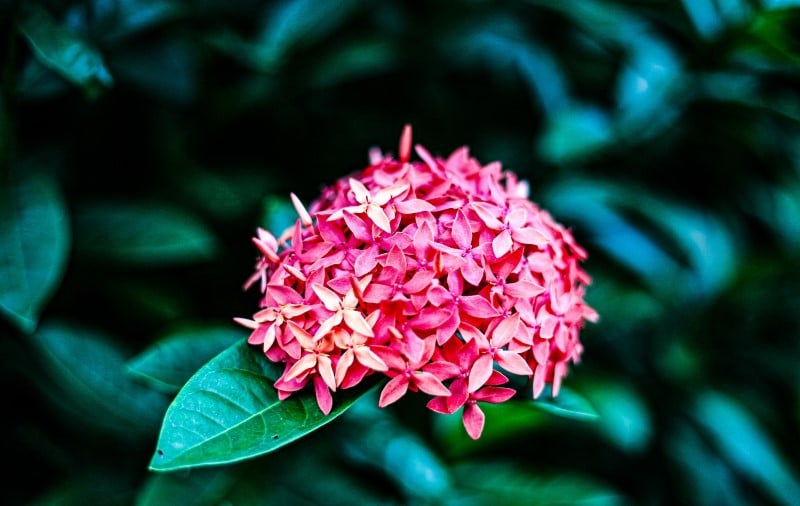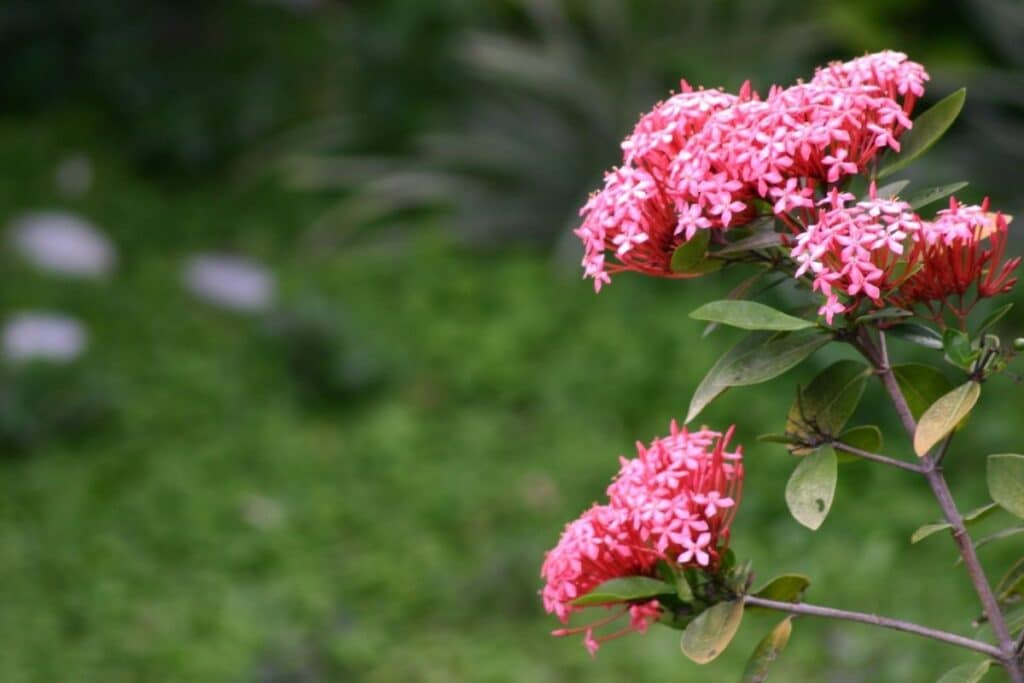Ixora plants (Ixora spp) are woody evergreen shrubs with a wonderfully exotic and tropical look. They produce masses of crimson flowers practically year-round and require very little maintenance. If you live in an area like southern Florida, with a warm, subtropical, or tropical climate, this is a plant that deserves your attention.
Read on to learn how to grow a beautiful Ixora shrub in your garden.
What Is An Ixora Shrub?
Although there are a great many different species in the genus, the most popular amongst gardeners is Ixora coccinea. These plants have wonderful common names like Jungle Flame, Jungle Geranium, and Flame of the woods. They are evergreen shrubs of the Rubiaceae family, known for their tropical nature.
Ixora shrubs typically have a rounded shape and may grow broader than they do high. The ixora bush can ultimately reach about 15 feet (4.5m) tall, although this does depend on the variety and the growing conditions.
Jungle geraniums originate from South Asia, in countries like Bangladesh, Sri Lanka, and India. There they grow in moist forest and thicket environments.
The dark green foliage is bronzey when young, with each leaf measuring 2-3 inches (5-7.5cm) long when fully developed. The glossy leaves are whorled or oppositely arranged, with smooth (entire) margins.
Ixora Flowers
Although the flower color of wild I. coccinea is a deep crimson, the color varies from yellow through red and pink to orange flowers, and even white in horticultural varieties. The beautiful flowers are produced in clusters known as cymes that measure up to about 5 inches (12.5cm) across. Each individual flower measures about an inch (2.5cm) across and has 4 petals.
These bright flowers bloom are long-lasting, remaining open for at least 5 weeks or more, and what’s more, this plant flowers pretty much throughout the year. The flowers are followed by small, round purple fruits (drupes), but they are not particularly showy.

How To Grow Ixora Plants
Plant care for ixora plants is negligible, which makes it useful as part of the low maintenance landscape.
Ixora plants are best grown from semi-ripe cuttings in the growing season of summer. They can be grown from seed, but germination can take a long time and is never guaranteed.
The ideal plant’s soil mixtures for these outdoor plants should be rich in organic material, especially acidic soil moist. Unfortunately, alkaline conditions cause chlorosis of the leaves, and even planting along pavements can be detrimental to these shrubs.
The tropical plants thrive in humid environments and should be kept well watered in dryer environments. They do, however, require well-drained soil to maintain soil moisture. These plants should be watered more sparingly in the winter months.
These flowering plants can be grown in full sun or partial shade. Full sun will result in the best flowering, but a little shade during the afternoon will be appreciated.
These dwarf ixora plants have been successfully grown outdoors in USDA Zone 9B, but 10 and 11 are safer bets. Flame of the woods is a tropical species that is a little drought tolerant but prefers a humid environment. It does well in coastal areas but is not adapted to direct salt spray or basic coastal soils.
In colder climates, a thriving ixora plant can brighten your home as an indoor container plant, as long as it receives ample bright light.
Ixora Plant Care
Pruning
Regular pruning is essential for plant Ixora care. After the flowering period, typically in late spring or early summer, trim the plant to maintain its desired shape and size.
Remove dead or yellowing leaves, spent flowers, and any leggy or overgrown branches. This encourages a bushier growth habit and stimulates the development of new blooms.
Pests and Plant Diseases
Keep a vigilant eye for common pests such as aphids, scale insects, and spider mites. If detected, treat promptly with insecticidal soap or neem oil. Adequate spacing between plants and good air circulation can help prevent fungal diseases.
Ensure the plant is not subjected to prolonged periods of high humidity, and avoid overwatering to reduce the risk of root rot.
Propagation
Ixora can be propagated through stem cuttings. Take 4 to 6-inch cuttings from healthy, non-flowering stems in the spring or early summer. Remove the lower leaves, dip the cut end in rooting hormone, and plant it in a well-draining potting mix.
Maintain high humidity around the cutting until roots develop, which usually takes a few weeks. Once rooted, transplant the new plants into individual pots or the garden. New growth should appear within a few weeks, indicating that the cutting has successfully rooted.
Ixora Uses
Horticultural Uses
Ixora’s glossy foliage and clusters of star-shaped blooms in various hues like red, orange, pink, and yellow add vibrancy to landscapes. They can be trained as hedges, borders, or container plants, gracing patios and balconies.
Ixora’s compact growth habit and attractive flowers make it ideal for bonsai enthusiasts, allowing them to miniaturize its tropical charm.
Human Uses
In Southeast Asia, Ixora flowers and leaves are used in traditional medicine to treat various ailments like skin infections, diarrhea, and diabetes.
Ixora’s fragrant flowers are often woven into leis and used in other floral arrangements, adding a touch of exotic sweetness to the air. Ixora’s nectar-rich flowers attract bees, contributing to honey production in warmer regions.
Wildlife Uses
Ixora’s vibrant blooms attract butterflies, bees, and hummingbirds, playing a vital role in pollination and supporting a healthy ecosystem.
Ixora’s dense foliage provides shelter and nesting sites for small birds, making it a valuable addition to wildlife gardens.
FAQs
What is the lifespan of ixora?
The lifespan of ixora plants can vary, but they typically live for several years, and some well-cared-for specimens can thrive for decades.
Why are my ixora leaves turning yellow and falling off?
Ixora leaves may turn yellow and fall off due to various factors, including insufficient sunlight, overwatering, or nutrient deficiencies. Ensure that the plant receives adequate hours of sunlight, maintains proper watering practices, and considers fertilizing with a balanced fertilizer.
Is Ixora low maintenance?
Ixora is generally considered low maintenance, especially in suitable climates. It prefers well-draining soil, regular watering, and occasional pruning to shape the plant. Additionally, providing it with the right balance of nutrients contributes to its overall health and resilience.
Conclusion
If you live in zones 10 or 11 and want a free-flowering shrub with a number of different landscaping uses for your garden, Ixora is a great plant. What’s not to like about a showy evergreen that needs very little attention from the gardener? The only possible stumbling block to success if you live in the right climate is the alkalinity of your soil.
*image by sameashk.yahoo.com.hk/depositphotos







